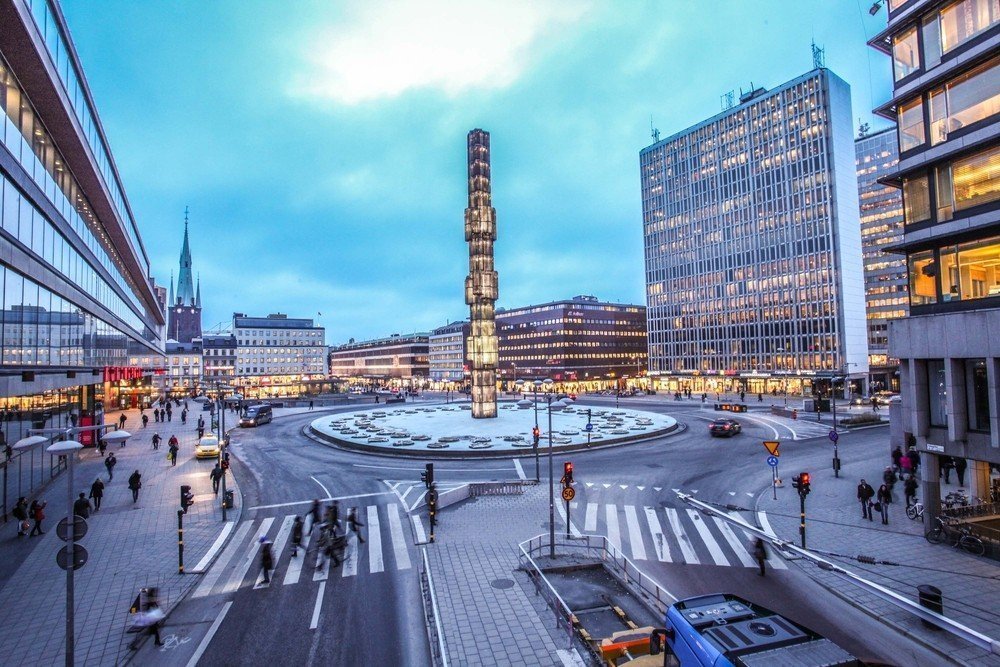Review of "bubbles" on the real estate markets in Europe – in the material of ee24.com.
The Swedes are creative: from bo (live) and sambo (cohabit) words they have coined "mambo" (to live with mother) neologism that is already in use. The enormous rise in house prices forces young Swedes and their Norwegian and Finnish neighbors, as well as Belgians and Britons to stay longer under parental wing. If the "bubbles" in the real estate markets burst, thousands and thousands of young people will be able to properly enter into adulthood. But will they really burst?
May the prices go up forever and further move away from the real property value? Not shure and crises, emerging from time to time, perfectly illustrate this statement. Let’s look at Stockholm: aborigines suffer there from a large number of visitors, inflating real estate prices. Each year, the Swedish capital is replenished with 30,000 new residents and by 2030 the city's population will grow by half. Affordable mortgage also adds its spoonful of tar in a barrel of honey of socially oriented society: the cheaper is the loan, the more people take it, accelerating the rise in prices, which in turn forces unhappy buyers to borrow bigger and bigger amounts from banks.
Real Estate in Stockholm rose threefold during the last 18 years and the debt of households is 1.7 times higher than their annual income. Apartment prices have risen by 11% over the last year, and by 9% the year before. It seems that no any career promotion nor salary increase, may not keep up with such progress.
--------------------
"To overcome the crisis, the Swedish authorities allowed unauthorized building and leasing of small houses in private gardens (with area up to 25 square meters)"
--------------------
There are no any economic background and reasons for increase of lending rates and market cooling: in 2010 the Riksbank (Central Bank of Sweden) made such an effort, however unemployment ceased and even deflation was fixed, so in 2011 the regulator reduced rates to the previous level. The only thing that the authorities were able to counterpose the crisis - they allowed landowners to wilfully build and lease small houses in their private gardens, (with an area up to 25 square meters). Offer is popular with young people as it’s better than "live with mother."

Stockholm
Sweden is the only country where the youth are thrown overboard the real market. The situation in neighboring Finland is not better: the ratio of prices and rents in Suomi is 44% higher than average figures of the past years. It is this correlation, which along with the proportion of prices and wages, characterizes the presence or absence of a "bubble" in the market.
In one of articles the ee24.com told that overcrowded apartments are becoming a new reality for Finland: workers and students are not able to rent nor to buy a home single-handed, so they have to cooperate in order to live and survive together. In Vantaa (a suburb of Helsinki, where the airport is located) 5,000 people are waiting for rent offer while less than 1,200 apartments are available annually.

Helsinki
The ratio of housing costs and renting prices in the UK exceeds the average level of the last decades by 43%. Prices increased by 7.8% over the last year across the UK and from 16% to 19% in London, according to different estimates, says The Economist newspaper. Foreign and local demand has already supplanted college students out the market and now the middle class is on turn. Today, the average house price in England is a quarter of a million euros and in 20 years it will increase fourfold exceeding the million, unless, of course, the crisis won’t interfere.
--------------------
"Property prices in Norway are almost the same as in England"
--------------------
Even such an economically stable country as Germany, may face problems. Wolfgang Schauble, Minister of Finance personally confirmed that the property market is facing the threat of overheating and new "bubble". Housing prices in Berlin, in particular, are growing faster than rental cost do: affordable mortgage makes the nation of tenants to gradually move into own apartments. According to the calculations made by the Federal Bank (Bundesbank) major cities are overpriced by 20% and prices still are growing: by 5,8% since Q12013 to Q1 2014 (Knight Frank).
Norway is also ready for record, the “rent-to-value” ratio there has already exceeded historical averages by 65%. Real estate prices in Norway are almost the same as in England: they grew fourfold since 1996 and the average level is €230,000. Loan amounts increase, so today the buyer owes the bank a two-year income of his family, that is about 200%, while the average euro area figure is 110% of annual income (for comparison, in the USA it’s 105%).

Geirangerfjord, Norway
The Benelux countries have also faced the pricing "bubble" threatening real estate markets. Some are resisting, others aren’t. In order to prevent the enormous mortgage consumption, the Netherlands authorities has applied restrictive mechanisms, setting credit ceilings based on the "loan - price" and "loan – family income" ratios.
As a result, if in 2011 in the Netherlands, people’s debt was about 112% of the purchased property value, then in 2012, no more than 106% were allowed and since 2018 the limit will be 100%. At the same time tax privileges for payment of mortgage interests are cut back. Such measures are pretty tough for a peaceful Europe, where rarely things change so dramatically, led to a decline in prices from 2011 to 2014 by 20% - as adjusted for inflation.
In contrast, in neighboring Belgium, where the pre-crisis prices moved in parallel with the Dutch ones, they have increased by 11% over the last three years and finally dispersed with the customer’s ideas about the reality.

Ghent, Belgium
Among other hazards experts call Dublin (where 1,400 new homes are built annually with 8,000 ones required and prices have risen by 23 % in the last 12 months), France (wages don’t keep pace with housing that becomes more expensive and the ratio of price and income is by 27% higher than normal level) and Switzerland (affordable mortgages drives people in debts, authorities forced banks to increase safety cushion in case of defaults). There are no claims to Portugal, Spain and Greece: property prices beaten by crisis in these countries are kept at their record low.
Text: Alexander Fetyukov for ee24.com